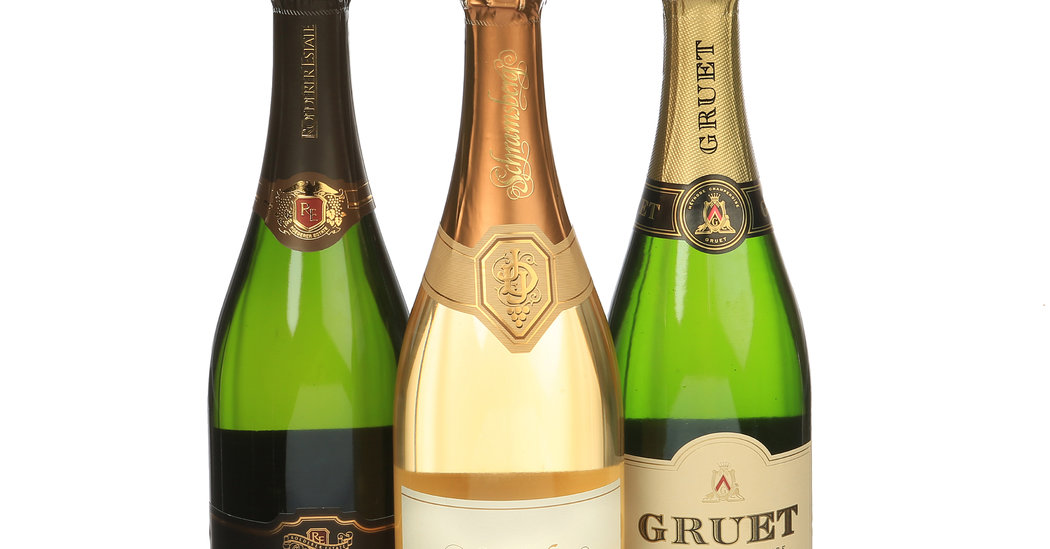
I’ll drink sparkling wine almost anytime, wherever it comes from, however it’s served.
I’m an anomaly. The vast proportion of sparkling wine is consumed in the last quarter of the year, primarily at holiday parties and New Year’s celebrations.
Often, that wine is Champagne. Sometimes it’s a wine inspired by Champagne, made by the same method, using the same set of grapes or both. And sometimes it’s a sparkling wine that has nothing to do with Champagne, like pétillant naturel, made using the oldest method of producing sparkling wine, with any grapes you like.
Sparkling wine lovers may feel a little lucky this season, especially if they like sparklers from France or Spain. The 25 percent tariff that recently went into effect on certain European foods, drinks and other products specifically exempts sparkling wines, for unspecified reasons.
Nonetheless, this year I thought it would be fun to examine wines that rarely receive much attention: American sparkling wines made in the Champagne style. These wines tend to be less expensive than equivalent Champagnes, tariff or not.
I picked three different wines at three different prices, partly because I thought it would be interesting to compare the differences. Here are the bottles I recommend:
Gruet American Sparkling Wine Brut NV $15
Roederer Estate Anderson Valley Brut NV $22
Schramsberg North Coast Blanc de Noirs Brut 2015 $35
Gruet, a longtime purveyor of moderately priced sparkling wine, is based in New Mexico. Its higher-end bottles carry New Mexico appellations. But the nonvintage brut is made in such quantity, the company says, that it must supplement its New Mexican grapes with grapes from three other states: California, Oregon and Washington, hence the nebulous “American Sparkling Wine” appellation.
Roederer Estate, a branch of the Louis Roederer Champagne house, grows all of its grapes in the Anderson Valley of Mendocino County, and carries that appellation. Both the Roederer Estate and the Gruet are blends of chardonnay and pinot noir.
The Schramsberg, however, is a blanc de noirs, indicating it’s a white wine made from red grapes. In Champagne, that would typically mean it would be made entirely from pinot noir, pinot meunier or both. But the Schramsberg is just 81 percent pinot noir, with the remainder chardonnay. It’s made from grapes grown in four counties in Northern California.
These three should not be hard to find. But if you are having trouble, don’t hesitate to try other cuvées from these producers, as well as bottles from Iron Horse, Gloria Ferrer, J, Domaine Carneros, Domaine Chandon or Mumm Napa. You might also find high-end sparklers from Under the Wire or Ultramarine. Go ahead, if you are game.
These wines ought to be versatile with food. Try them with fried chicken, or popcorn, both classic pairings (at least for me). Or with seafood or sushi. Yes, serve them cold, yet not so icy that all nuance is lost. No need to haul out the ceremonial flutes. Ordinary wine glasses are better.
Follow NYT Food on Twitter and NYT Cooking on Instagram, Facebook, YouTube and Pinterest. Get regular updates from NYT Cooking, with recipe suggestions, cooking tips and shopping advice.




